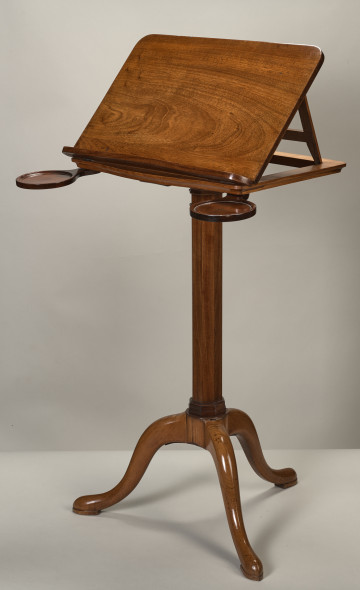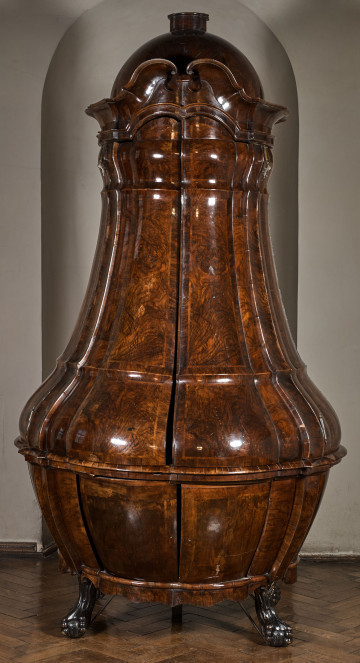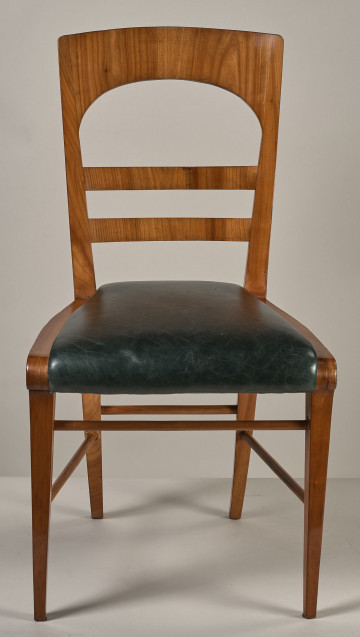
Wooden desktop
18th-19th century
Castle Museum in Łańcut
Part of the collection: Meble i wyposażenie wnętrz
Loungers are furniture used for resting during the day. They have been known since ancient times. In modern Europe, loungers appeared in the 17th century, became firmly established in the interiors of European palaces in the 18th century, became the most fashionable, and at the same time commonplace, in the 19th century, and are still used throughout the world today. Depending on the time of their creation and the prevailing fashion, they took different shapes and were given different names. Firstly, they were known as a day beds or rest beds in English and in French as lits du jour or lits de repose; with the overpowering influence of French fashion, they eventually established themselves as chaises longues (long chairs), commonly referred to in Polish as ‘szezlongi’. From the 18th century onwards, chaises longues in various varieties became luxury furniture, used in ladies’ boudoirs, salons, drawing rooms and suites. Comfortable, upholstered, richly decorated – they were often one of the elements of a furniture set, forming a stylistic whole with the interior or flat for which they were intended. The popularity of this piece of furniture is evidenced by the fact that many famous ladies were portrayed on chaises longues, half-lying, often in contemplation or with a book in their hand. Teresa Bagińska-Żurawska https://orcid.org/0000-0002-9243-3967
Author / creator
Dimensions
height: 86 cm, width: 70 cm
Object type
Furniture and interior fittings
Technique
upholstery
Material
fabric, wood
Creation time / dating
Creation / finding place
Owner
Castle Museum in Łańcut
Identification number
Location / status

18th-19th century
Castle Museum in Łańcut

18th century
Castle Museum in Łańcut

19th (?) century
Castle Museum in Łańcut
DISCOVER this TOPIC
Museum of King Jan III's Palace at Wilanów
DISCOVER this PATH
Educational path